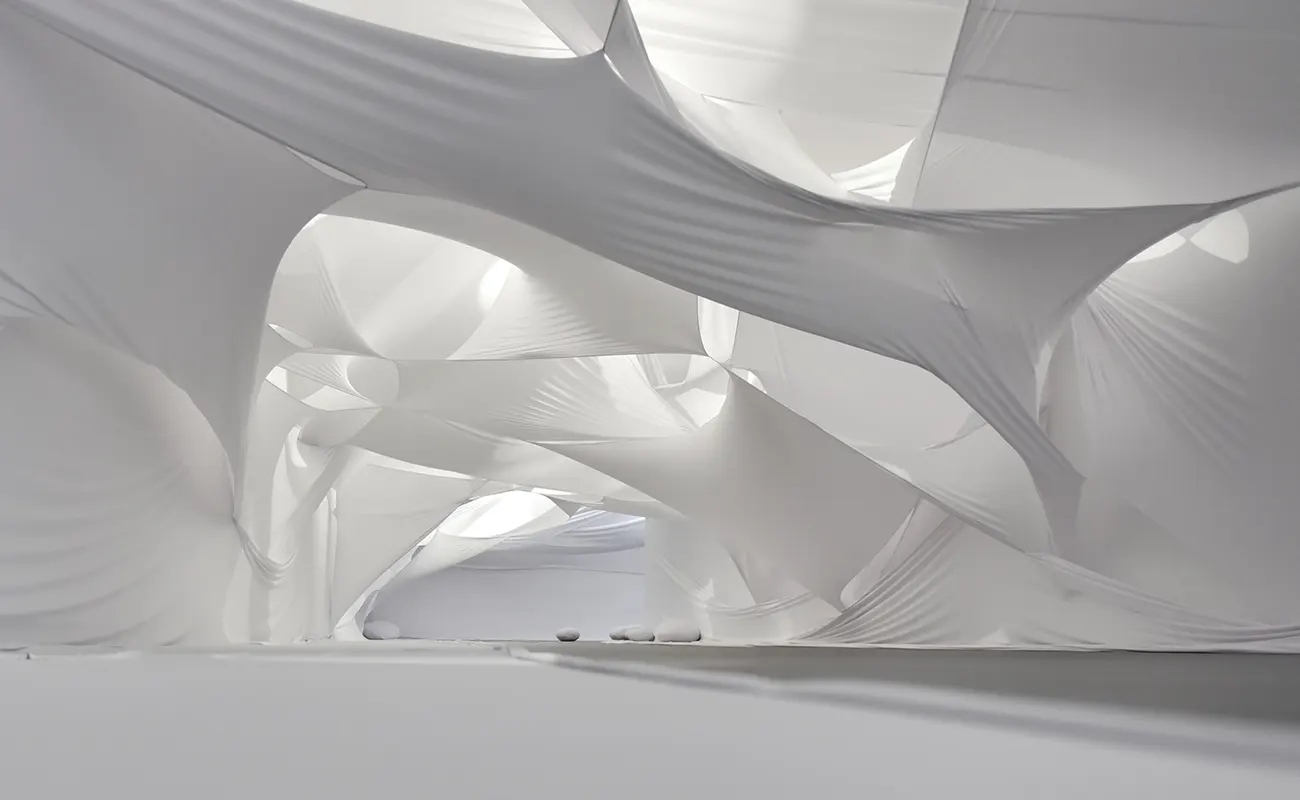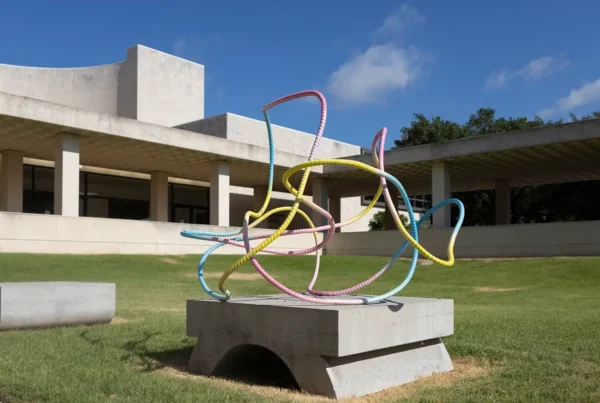“My art is my way of interpreting various emotions and spiritual thoughts in order to show the true face of human nature.”
The Voyage of a Female Artist
Stella Zhang, born in China in 1965 amid a tumultuous socio-political landscape, had her formative years shaped by her father, a diligent painter who deeply influenced her. An introverted child, Zhang’s early exposure to art was through her father’s intricate ink landscape paintings and her own craft making from limited resources. This sparked a fascination for art that remained undimmed and marked the beginning of her remarkable journey in the art realm.
After obtaining her Bachelor of Fine Arts degree at the Central Academy of Fine Arts, Zhang expanded her horizons, relocating to Japan and subsequently the United States. Her artistic career boasts an impressive array of achievements, her work finding its home in distinguished galleries and museums across these countries, and receiving international recognition. A major highlight was her solo exhibition at Art Basel in Hong Kong in 2016, further affirming her status within the art community.
Zhang’s art serves as a mirror to her internal emotional landscape and spiritual cogitations. Her choice of materials, often raw and commonplace, provoke a sense of familiarity and emotion, reflecting her characteristic style of disregard for preconceived limitations and conventions. This form of self-expression is deeply intertwined with her personal identity and serves as a sanctuary for introspection.
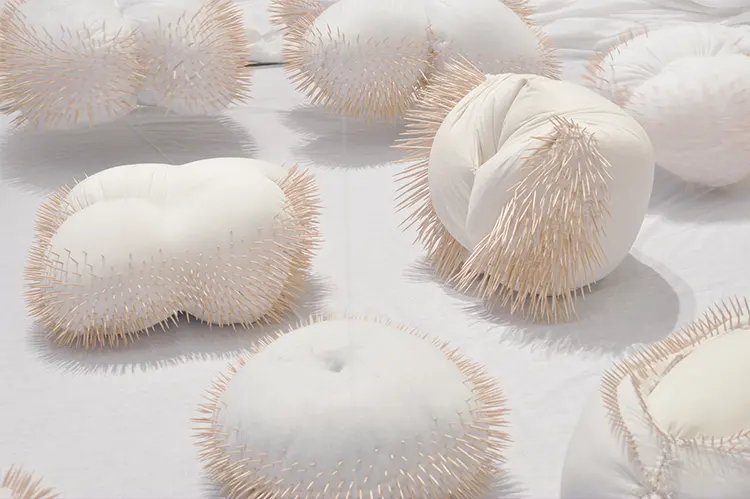
Tracing the Evolution: Stella Zhang’s Artistic Journey
Stella Zhang’s career, creative choices, and achievements are intricately linked to her personal journey, marked by the influence of her father, her cultural background, and a journey of self-exploration through art. Born during the culmination of the Cultural Revolution, Zhang’s childhood was characterized by a mix of resilience and vulnerability, which fueled her desire to pursue a career in art. This unique blend of traits resulted in a style that is organic, sincere, and introspective, making her art relatable and profound.
Zhang’s foundation in art was laid early on in her life, as she delved into art and foreign literature at the Beijing Youth Palace and the Central Academy of Fine Arts. This experience enriched her intellectual perspective and appreciation for art, setting a strong base for her future work. The 1980s marked a turning point in China with significant reforms that sparked a newfound passion for contemporary art and catapulted Zhang into a cultural renaissance. During this period, the “85 New Wave of Fine Arts” movement emerged, advocating for artistic freedom and challenging established norms.
In the aftermath of a tumultuous 1989, Zhang ventured to Japan, seeking new experiences and enrolling in Tama Art University and Tokyo University of the Arts to study Japanese painting. It was during this time that she was introduced to “Concrete Art,” a revolutionary approach to artistic expression that would later shape her work.
In 2003, Zhang relocated to California, immersing herself in a different cultural environment that would have a lasting impact on her artistic path. The wabi-sabi aesthetic, which she had admired while in Japan, became more pronounced in her work. She started to incorporate everyday materials such as napkins and hay into her creations, flourishing in the midst of cultural diversity and broadening her creative horizons.

Stella Zhang: Multifaceted Vision in a Confluence of Cultures
Stella Zhang’s artistic journey is marked by a boundless exploration inspired by curiosity, combining diverse mediums with a special emphasis on the human form and its complex aspects. Her ability to adapt and draw inspiration from varied cultural contexts has contributed to a body of work that invites introspection and challenges traditional perspectives. This unique synthesis of materials and themes fosters complex interactions with viewers, blending Eastern and Western aesthetics through a multicultural perspective. Zhang’s artwork reflects memories and shared experiences, showcasing our bodies as both communal vessels for social interaction and deeply personal entities.
Zhang’s work goes beyond mere depictions of personal experiences; it aims to offer a self-reflective portal, as encapsulated in her poignant title, “Open a Window for Myself.” Her art elegantly interweaves diverse elements, merging the Chinese artistic approach with Japanese wabi-sabi and Mono-ha philosophies. She employs a wide range of materials, from elemental substances like stone, wood, and iron to more personal objects like stockings. These materials, reminiscent of iconic artists such as Louise Bourgeois, Lee Bontecou, and Yayoi Kusama, are used to craft metaphors encapsulating human nature.
In works such as “Binding,” Zhang skillfully alludes to symbols like the uterus, while collections like “0-Viewpoint” explore feminist narratives within various cultural contexts. The motif “0” recurs in her works, inviting interpretations ranging from societal divides and internal conflicts to avenues for new perspectives. Overall, her artistic journey reflects a diverse and evolving creative vision that combines diverse mediums and narratives, ultimately inviting viewers to engage in self-reflection and challenge traditional perspectives.
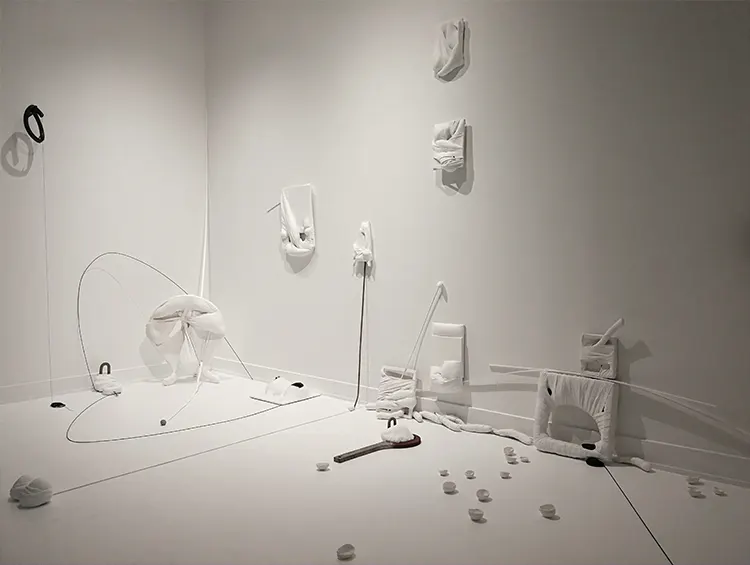
Transcending Traditional Boundaries
Zhang’s approach to contemporary art blends Eastern and Western traditions, her Chinese heritage, and elements of post-war Japanese “anti-art” and Mono-ha aesthetics, creating a rich and impactful tapestry of art. Her work not only sparks conversations and tells stories but also catalyzes cultural change and transcends geographical and societal boundaries. Zhang has a unique way of using fabric, a material almost akin to skin, to transcend traditional boundaries and distill her work into its essential elements. This approach results in a spontaneous artistic language, similar to natural conversation, which ensures that each piece is balanced and precise.
The influence of Louise Bourgeois is evident in Zhang’s work, which is rooted in her unique physical and psychological memory. Viewing each blank canvas as an opportunity to embrace the unknown, Zhang’s creative process becomes a meditative exercise, akin to feeling the current in a flowing stream. This perspective ensures that, regardless of size, each piece unveils something new, materializing previously hidden aspects as autonomous yet integral parts of her being.
Working within the vibrant art milieu of San Francisco, Zhang has distinguished herself by incorporating feminist undertones and personal experiences into her work, resulting in an evocative blend of Eastern and Western aesthetics. Her work in California delves deeply into themes of power, identity, equity, and feminist narratives, challenging established power structures and encouraging self-reflection. This innovative approach not only deepens conversations around equity and identity but also helps foster cultural change and encourages self-reflection.
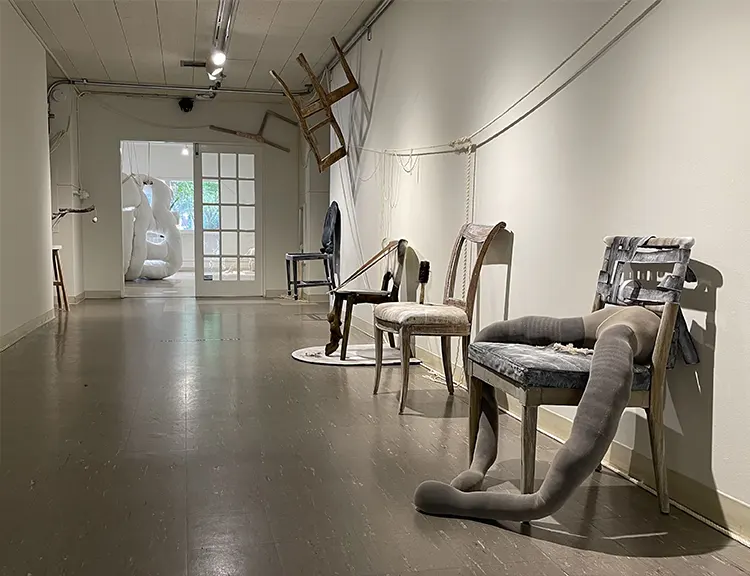
Stella Zhang: Unfettered Creativity and Its Impact
Stella is unrestrained by medium selection. Her curiosity guides her towards diverse artistic mediums, each an experimental platform for exploration. Her work revolves around the complexities of the human form, a deeply personal yet shared entity, absorbing experiences from life-altering events to faint echoes of caution. Zhang’s human-centric oeuvre, mirroring memories and human truths, acts as a reflective surface for societal interactions.
Zhang navigates themes unearthing hidden conflicts and stretching our ability to relate to shared experiences of power, inequality, and identity. She critiques power hierarchies and value systems, her artwork serving as a contextual response to contemporary life. The artist’s works engage audiences in nuanced interactions, challenging accepted norms. Her vocabulary is minimalistic yet intimate, skillfully blending Eastern and Western aesthetics through a multicultural lens. Zhang employs commonplace, evocative materials such as fabric, a second skin, allowing her to experiment and distill her work to essential elements.
The freedom of art’s language allows Zhang to express herself spontaneously, unbounded by preexisting rules. Her intuitive creation process, free from meticulous planning, allows for purest manifestation of intent. Zhang acknowledges the allure of unplanned elements in the creative journey, allowing for unexpected emotions and artwork to emerge organically. Her control over her work is instinctual, dictated by the unique needs of each piece.
The influence of Louise Bourgeois is apparent in Zhang’s art, with each piece embarking on a journey of introspection and external exploration, rooted in her physical and psychological memory. The process of creation is a meditative exercise, allowing the unseen within her to materialize, existing autonomously while forever part of her. Each piece, regardless of its size, is a revelation, a surprise awaiting unveiling.



